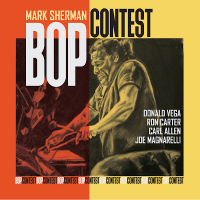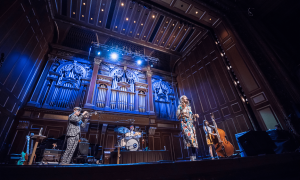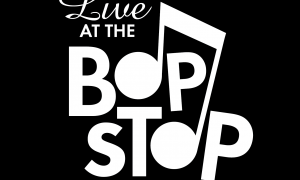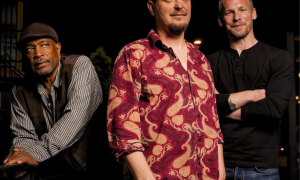In May 1970, the Beatles released Let It Be a month after they disbanded. I remember hearing it for the first time at age 13 on the driveway of my next-door neighbor in the suburbs. The neighbor was on his bike, I was on my green Schwinn Sting-Ray and two other friends were on theirs. His older sister was in her room with her boyfriend and they were blasting Get Back. The four of us listened and exchanged glances until one finally said to her brother, “Are you parents home?"
From the start, in 1970, the Beatles' final studio album was recorded and produced with seething frustration and drama. Apparently, being a Beatle wasn't all it was cracked up to be. There was the relentless business stress, fear of crowds, creative struggles, the loss of Brian Epstein, spouses gaining studio influence, internal bossiness and a loathing of each other's musical quirks and agendas. It all took a toll. When the album was completed early in the year, John and George wanted their lives back. Paul and Ringo, to some extent, did, too, but they didn't quite understand the urgency to split up. After all, the Beatles together were rock royalty. No other band came close. Embarking on a solo career meant liberation but it also came with the terrifying risk of limited appeal and declining fortunes.
I spent the past few days listening to the new six-disc Let It Be: Super Deluxe Edition of the reissued package released today. The set was newly mixed by Giles Martin and Sam Okell in stereo, 5.1 surround DTS, and Dolby Atmos. The new stereo mix of the original album was guided by the version produced by Phil Spector. In addition to the remixed original album, there are four discs of outtakes, demos and previously unreleased material, including Glyn Johns’ original version of the never-released Get Back, and a dynamic sounding Blu-ray edition of the album. The set comes with a 100-page hardback book with an intro by Paul McCartney, track-by-track recording information, and many unseen photos, notes, and more.
The music is more beautiful than I remember and at times edgier and more muscular. Many of the songs are distinctly John's handiwork or Paul's, and a number of tracks still sound unfinished. What makes the album fascinating is this tearing-at the-seams quality. There's little cohesion from one song to the next, and you can hear powerful emotional and creative forces pulling the four musicians in different directions. In some ways, it feels like a backyard birthday party held by parents who are about to announce their divorce. The tables aren't as pretty as they should be, the food isn't perfect and the cake seems a bit lopsided. But it's a party just the same. Or a wake.
Even though the group was on its last legs as a unit, there's a certain unmistakable energy that's both melancholy and glorious, like Frank Sinatra's Only the Lonely, Billie Holiday's Lady in Satin or Lester Young's final recording for Barclay in Paris. The story of how Let It Be reached the marketplace was a strange journey fraught with fatigue, betrayal and recrimination. The thread that runs through it all is the pure pop genius of the Beatles, George Martin and Phil Spector.
At the tail end of August in 2012, I flew to London, rented a car and drove northwest on the A40. About an hour or so later, I exited and navigated the small winding roads through the picturesque Cotswolds. Before long, I pulled up a stone drive and parked in front of an elegant and compact country estate. There, I was greeted by Sir George Martin and his wife, Lady Judy. I was there to interview him on a wide range of subjects for a Wall Street Journal Cultural Conversation, which is what these types of in-depth pieces were called back then.
It was a beautiful late summer day. The temperature was in the mid-70s and the sun was bright but the sky was changeable—a dramatic harbinger of an English autumn to come. After some small talk, Sir George, Sir George's publicist and I headed up a sloping lawn to a gazebo at the top. After sitting down, I placed my digital tape recorders on the table and turned them on. Sir George did an amusing air check “Testing, Testing, 1-2, 1-2" and off we went. The interview lasted about an hour and a half. During our conversation on a wide range of Beatles- and post-Beatles related topics, I asked him about Let It Be:
Marc Myers: How would you have produced Let It Be differently than what we hear now?
Sir George Martin: Well I had produced the original [laughs]. Let It Be is a big sword in my side. By then, John had gone off to New York and didn’t seem to like anybody at that point. He was going through a very moody phase. He was sloughing everyone off—Paul, George, Ringo, me and [their music publisher] Dick James [of Northern Songs Ltd.] in particular.
MM: Where did things start to go off the rails with the album?
GM: From the start. John came to me and said, “I want to make this clear: we don’t want any of your production crap on this.” I said, “What do you mean by that?” He said, “No overdubbing. We do it live. We do it for real. We’re a good band. No additions of other instruments. None of your orchestrations. We’re a band. We’re a good band. We can do it.”
MM: That’s pretty blunt.
GM: It was. John laid down these strictures. He continued, “Moreover, we’re not going to edit. All of our masters will be finished works in the studio.” This meant no splicing if there were mistakes or sound problems. If that happened, we’d have to do complete re-takes.
The result, Sir George told me, “was a mess." Ultimately, Sir George put together an album, warts and all, and gave it to EMI. It was never released, he said, “Thank god." The Beatles, led by Paul, approached Sir George to record again, with Paul promising that John would be on his best behavior. Instead, John and George, Sir George said, decided to take the EMI tape to Phil Spector, who produced the album that was ultimately released. As Sir George told me, “I was very disappointed with the entire affair, and even today, talking about it is painful."
While the Beatles' breakup hovers over the deluxe set, a good chunk of the album remains solid work. Paul's Two of Us already has a Wings sound, Lennon's Across the Universe is dreamy and idealistic, Paul's Let It Be, The Long and Winding Road and Get Back are masterpieces, Harrison's For You Blue is loopy but has a certain appeal and Lennon's early composition One After 909 is a throwback change-up.
The deluxe edition with its many studio takes, convesation and bickering is revealing. The previously unreleased tracks shed light on John's temperment and impending revolution against George Martin's polished production standards, John's angry realization that those standards were a necessity, the friction between bandmates, the belittling of George Harrison and George's decision to walk out, John's newfound cockiness, the Apple rooftop rehearsal, the betrayal of George Martin and all the rest. The grit and dissolving unity make for a startling work of art.
Let It Be was the Beatles last stand and, in many ways, the title track serves as a requiem for a band that did more to supersize rock, rock celebrity and the rock concert than any other. After the breakup, Paul and Linda would eventually form Wings, George would embark on a solo career recording all the songs John and Paul rejected, Ringo would embrace the American songbook, and John went to work with his new writing partner—his wife, Yoko Ono. A year later they would collaborate on what is certainly John's greatest song, Imagine.
Think of Let It Be as the final episode of a streaming saga, with all the score-settling, explosions and emotion without pretense. In the hands of Giles Martin, Let It Be reissue and all of its bonus tracks, has become multidimensional and easier to understand. It's also more tolerable and easier to appreciate all these years later. It also sounds a heck of a lot better than it did on my neighbor's driveway.
From the start, in 1970, the Beatles' final studio album was recorded and produced with seething frustration and drama. Apparently, being a Beatle wasn't all it was cracked up to be. There was the relentless business stress, fear of crowds, creative struggles, the loss of Brian Epstein, spouses gaining studio influence, internal bossiness and a loathing of each other's musical quirks and agendas. It all took a toll. When the album was completed early in the year, John and George wanted their lives back. Paul and Ringo, to some extent, did, too, but they didn't quite understand the urgency to split up. After all, the Beatles together were rock royalty. No other band came close. Embarking on a solo career meant liberation but it also came with the terrifying risk of limited appeal and declining fortunes.
I spent the past few days listening to the new six-disc Let It Be: Super Deluxe Edition of the reissued package released today. The set was newly mixed by Giles Martin and Sam Okell in stereo, 5.1 surround DTS, and Dolby Atmos. The new stereo mix of the original album was guided by the version produced by Phil Spector. In addition to the remixed original album, there are four discs of outtakes, demos and previously unreleased material, including Glyn Johns’ original version of the never-released Get Back, and a dynamic sounding Blu-ray edition of the album. The set comes with a 100-page hardback book with an intro by Paul McCartney, track-by-track recording information, and many unseen photos, notes, and more.
The music is more beautiful than I remember and at times edgier and more muscular. Many of the songs are distinctly John's handiwork or Paul's, and a number of tracks still sound unfinished. What makes the album fascinating is this tearing-at the-seams quality. There's little cohesion from one song to the next, and you can hear powerful emotional and creative forces pulling the four musicians in different directions. In some ways, it feels like a backyard birthday party held by parents who are about to announce their divorce. The tables aren't as pretty as they should be, the food isn't perfect and the cake seems a bit lopsided. But it's a party just the same. Or a wake.
Even though the group was on its last legs as a unit, there's a certain unmistakable energy that's both melancholy and glorious, like Frank Sinatra's Only the Lonely, Billie Holiday's Lady in Satin or Lester Young's final recording for Barclay in Paris. The story of how Let It Be reached the marketplace was a strange journey fraught with fatigue, betrayal and recrimination. The thread that runs through it all is the pure pop genius of the Beatles, George Martin and Phil Spector.
At the tail end of August in 2012, I flew to London, rented a car and drove northwest on the A40. About an hour or so later, I exited and navigated the small winding roads through the picturesque Cotswolds. Before long, I pulled up a stone drive and parked in front of an elegant and compact country estate. There, I was greeted by Sir George Martin and his wife, Lady Judy. I was there to interview him on a wide range of subjects for a Wall Street Journal Cultural Conversation, which is what these types of in-depth pieces were called back then.
It was a beautiful late summer day. The temperature was in the mid-70s and the sun was bright but the sky was changeable—a dramatic harbinger of an English autumn to come. After some small talk, Sir George, Sir George's publicist and I headed up a sloping lawn to a gazebo at the top. After sitting down, I placed my digital tape recorders on the table and turned them on. Sir George did an amusing air check “Testing, Testing, 1-2, 1-2" and off we went. The interview lasted about an hour and a half. During our conversation on a wide range of Beatles- and post-Beatles related topics, I asked him about Let It Be:
Marc Myers: How would you have produced Let It Be differently than what we hear now?
Sir George Martin: Well I had produced the original [laughs]. Let It Be is a big sword in my side. By then, John had gone off to New York and didn’t seem to like anybody at that point. He was going through a very moody phase. He was sloughing everyone off—Paul, George, Ringo, me and [their music publisher] Dick James [of Northern Songs Ltd.] in particular.
MM: Where did things start to go off the rails with the album?
GM: From the start. John came to me and said, “I want to make this clear: we don’t want any of your production crap on this.” I said, “What do you mean by that?” He said, “No overdubbing. We do it live. We do it for real. We’re a good band. No additions of other instruments. None of your orchestrations. We’re a band. We’re a good band. We can do it.”
MM: That’s pretty blunt.
GM: It was. John laid down these strictures. He continued, “Moreover, we’re not going to edit. All of our masters will be finished works in the studio.” This meant no splicing if there were mistakes or sound problems. If that happened, we’d have to do complete re-takes.
The result, Sir George told me, “was a mess." Ultimately, Sir George put together an album, warts and all, and gave it to EMI. It was never released, he said, “Thank god." The Beatles, led by Paul, approached Sir George to record again, with Paul promising that John would be on his best behavior. Instead, John and George, Sir George said, decided to take the EMI tape to Phil Spector, who produced the album that was ultimately released. As Sir George told me, “I was very disappointed with the entire affair, and even today, talking about it is painful."
While the Beatles' breakup hovers over the deluxe set, a good chunk of the album remains solid work. Paul's Two of Us already has a Wings sound, Lennon's Across the Universe is dreamy and idealistic, Paul's Let It Be, The Long and Winding Road and Get Back are masterpieces, Harrison's For You Blue is loopy but has a certain appeal and Lennon's early composition One After 909 is a throwback change-up.
The deluxe edition with its many studio takes, convesation and bickering is revealing. The previously unreleased tracks shed light on John's temperment and impending revolution against George Martin's polished production standards, John's angry realization that those standards were a necessity, the friction between bandmates, the belittling of George Harrison and George's decision to walk out, John's newfound cockiness, the Apple rooftop rehearsal, the betrayal of George Martin and all the rest. The grit and dissolving unity make for a startling work of art.
Let It Be was the Beatles last stand and, in many ways, the title track serves as a requiem for a band that did more to supersize rock, rock celebrity and the rock concert than any other. After the breakup, Paul and Linda would eventually form Wings, George would embark on a solo career recording all the songs John and Paul rejected, Ringo would embrace the American songbook, and John went to work with his new writing partner—his wife, Yoko Ono. A year later they would collaborate on what is certainly John's greatest song, Imagine.
Think of Let It Be as the final episode of a streaming saga, with all the score-settling, explosions and emotion without pretense. In the hands of Giles Martin, Let It Be reissue and all of its bonus tracks, has become multidimensional and easier to understand. It's also more tolerable and easier to appreciate all these years later. It also sounds a heck of a lot better than it did on my neighbor's driveway.
This story appears courtesy of JazzWax by Marc Myers.
Copyright © 2026. All rights reserved.

























